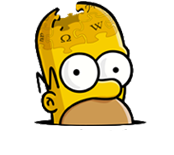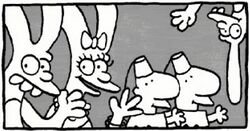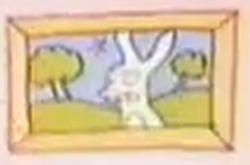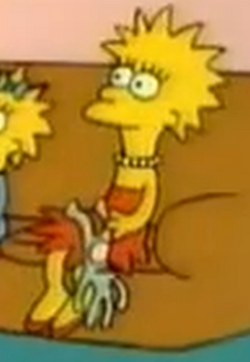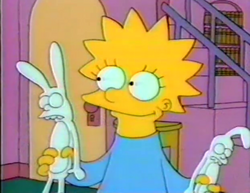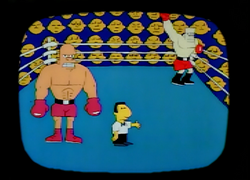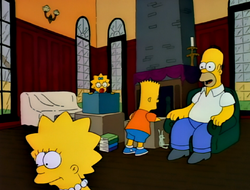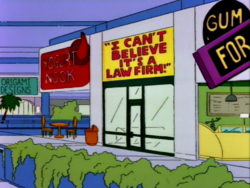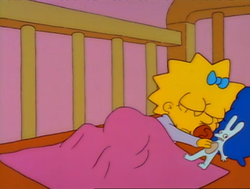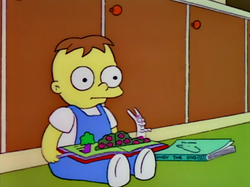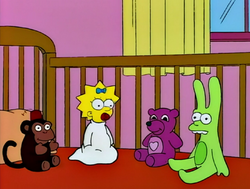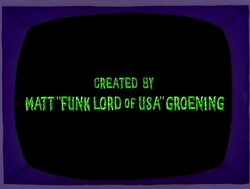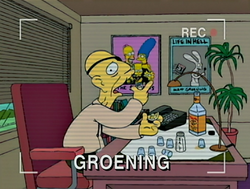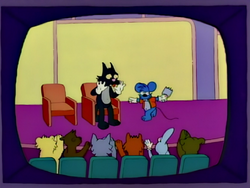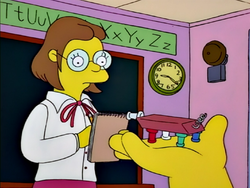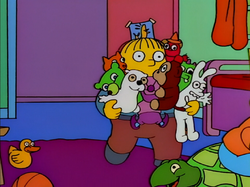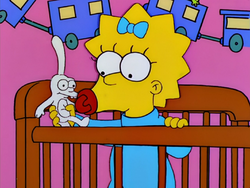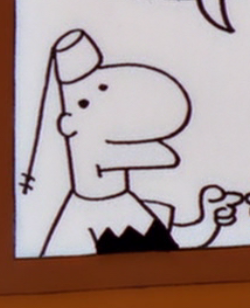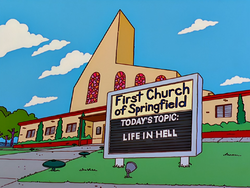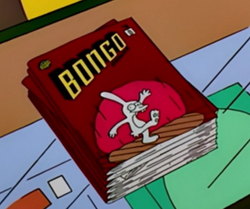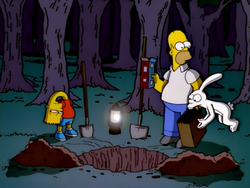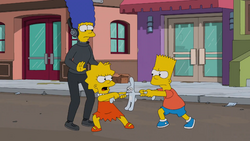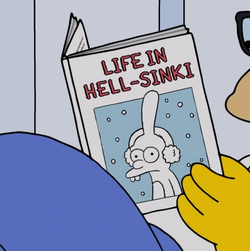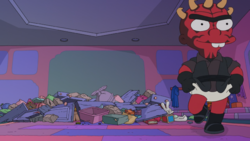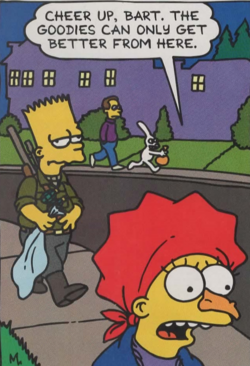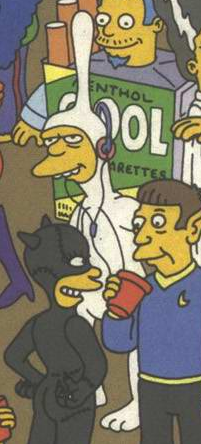
Difference between revisions of "Life in Hell"
Solar Dragon (talk | contribs) (→Episodes) |
(→Episodes: add) |
||
| (3 intermediate revisions by one other user not shown) | |||
| Line 1: | Line 1: | ||
| − | {{ | + | {{Italic title}} |
{{comics | {{comics | ||
|title= Life in Hell | |title= Life in Hell | ||
| Line 145: | Line 145: | ||
{{TB|"[[The Last Temptation of Homer]]"}} | {{TB|"[[The Last Temptation of Homer]]"}} | ||
{{TB| When Homer's sweat has made the writing on his palm unreadable he tries to decipher the text anyway, which spells out: "Nom Yo Ho Renge Kyo", a mantra once sang by [[Akbar]] and [[Jeff]].}} | {{TB| When Homer's sweat has made the writing on his palm unreadable he tries to decipher the text anyway, which spells out: "Nom Yo Ho Renge Kyo", a mantra once sang by [[Akbar]] and [[Jeff]].}} | ||
| − | {{TBT|[[File: Maggie green Binky.png|250px]]}} | + | {{TBT|[[File:Maggie green Binky.png|250px]]}} |
{{TB|[[Season 6|6]]}} | {{TB|[[Season 6|6]]}} | ||
{{TB|108}} | {{TB|108}} | ||
| Line 215: | Line 215: | ||
{{TB|"[[Jaws Wired Shut]]"}} | {{TB|"[[Jaws Wired Shut]]"}} | ||
{{TB| Maggie plays with a Bongo doll.}} | {{TB| Maggie plays with a Bongo doll.}} | ||
| + | {{TBT|[[File:No image.png|200px]]}} | ||
| + | {{TB|[[Season 26|26]]}} | ||
| + | {{TB|558}} | ||
| + | {{TB|"[[Simpsorama]]"}} | ||
| + | {{TB|Some of the [[New New York creatures|mutant rabbits]] resembly Binky and Bongo.}} | ||
{{TBT|[[File:Bart and Lisa pull at a Bongo doll.png|250px]]}} | {{TBT|[[File:Bart and Lisa pull at a Bongo doll.png|250px]]}} | ||
{{TB|[[Season 33|33]]}} | {{TB|[[Season 33|33]]}} | ||
| Line 272: | Line 277: | ||
*{{Wikipedialink}} | *{{Wikipedialink}} | ||
| − | {{Cultural references}} | + | {{Cultural references|comics=yes}} |
| − | |||
Latest revision as of 07:21, September 15, 2024
Life in Hell
| ||||
Comic Information
|
Life in Hell was a 1977-2012 weekly comic strip by Matt Groening. The strip featured a family of anthropomorphic rabbits (father Binky, mother Sheba and son Bongo) and a pair of identical-looking gay lovers (Akbar and Jeff). Groening used these characters to explore a wide range of topics about love, sex, work, and death. His drawings are full of expressions of angst, alienation, self-loathing, and fear of inevitable doom.
Life in Hell started in 1977 as a self-published comic book Groening used to describe life in Los Angeles to his friends. Groening photocopied and distributed it in a small "punk" corner of the record store in which he worked, Licorice Pizza on Sunset Boulevard. Life in Hell debuted as a comic strip in the avant-garde Wet magazine in 1978,[1] to which Groening made his first professional cartoon sale. The first strip, entitled "Forbidden Words", appeared in the September/October issue. Popular in the underground, Life in Hell was picked up by the Los Angeles Reader[2] (an alternative weekly newspaper where Groening also worked as a typesetter, editor, paste-up artist and music critic) in 1980, where it began appearing weekly.
Life in Hell reached the attention of Hollywood producer James L. Brooks, who received one strip — "The Los Angeles Way of Death" from 1982.[3] In 1985, Brooks contacted Groening with the proposition of developing a series of short animated skits, called "bumpers", for The Tracey Ullman Show. Originally, Brooks had wanted Groening to adapt his Life in Hell characters for the show. Fearing the loss of ownership rights to his characters, Groening instead created an entirely new batch of characters, the Simpsons. Groening continued Life in Hell' until 2012.[4]
Contents
References to Life in Hell on The Simpsons[edit]
Shorts[edit]
|
Episodes[edit]
|
Specials[edit]
|
Comics[edit]
|
Books[edit]
|
References[edit]
External links[edit]
| Wikisimpsons has a collection of images related to Life in Hell. |
